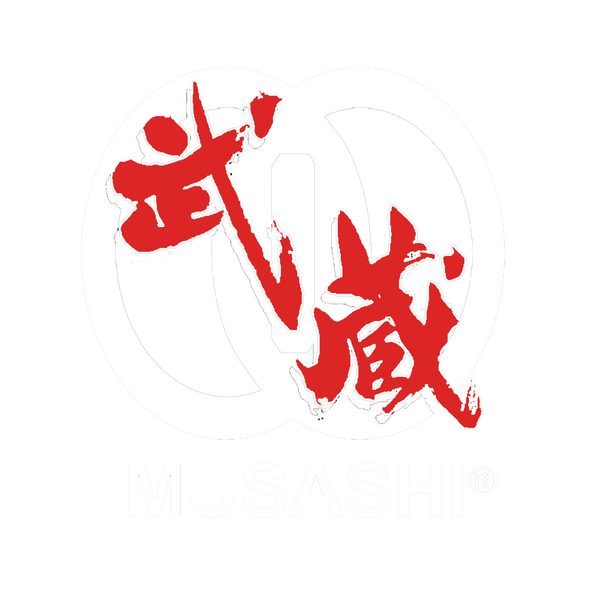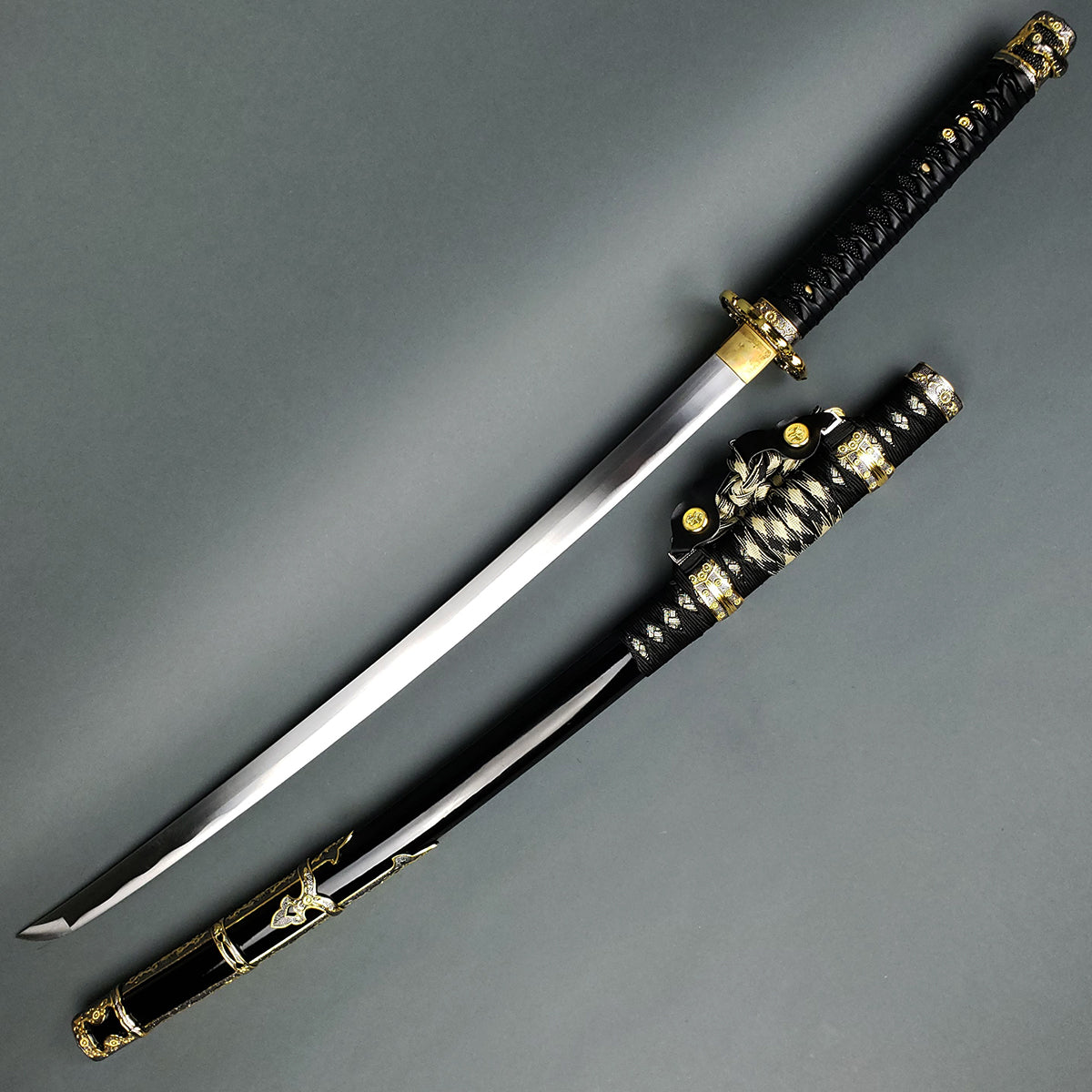
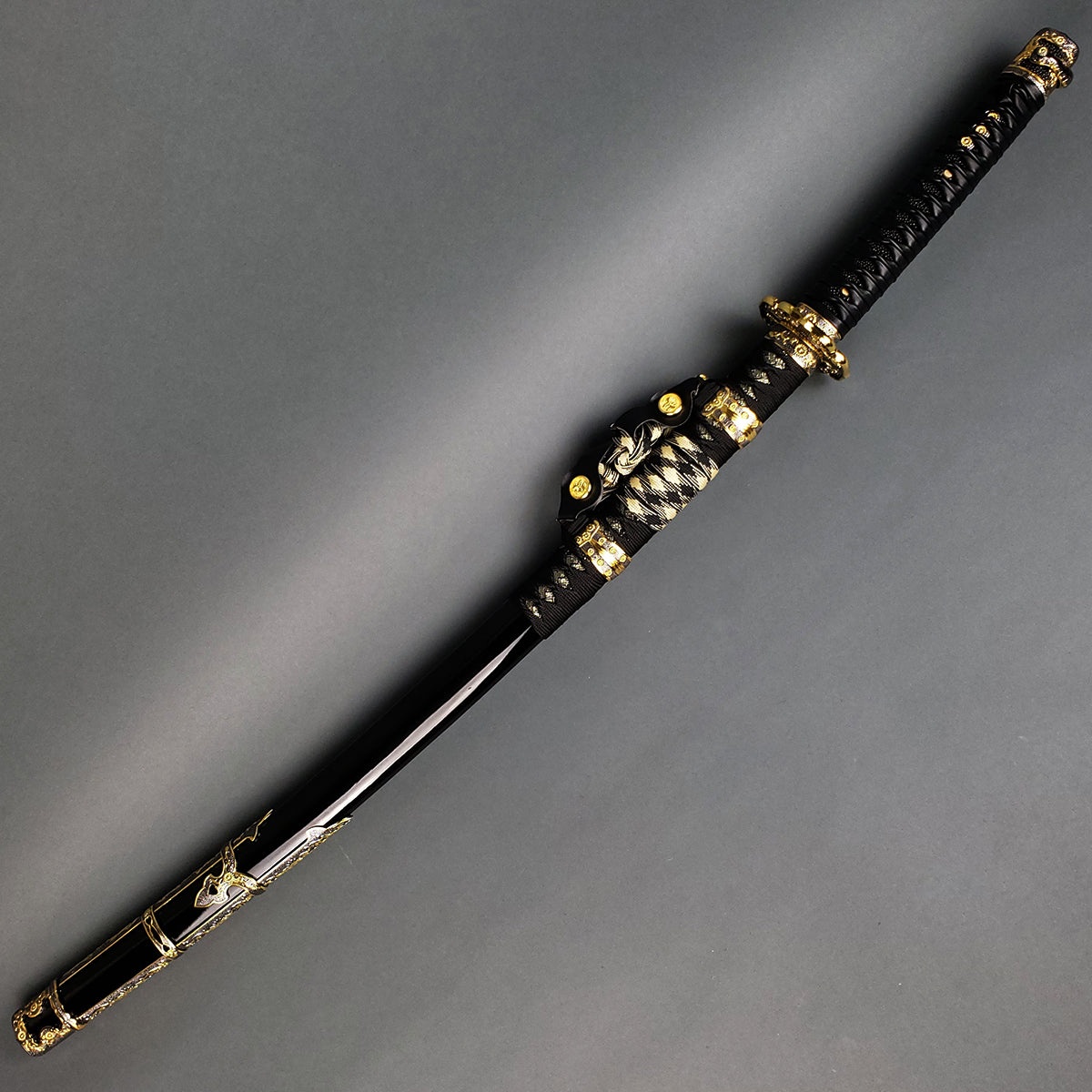
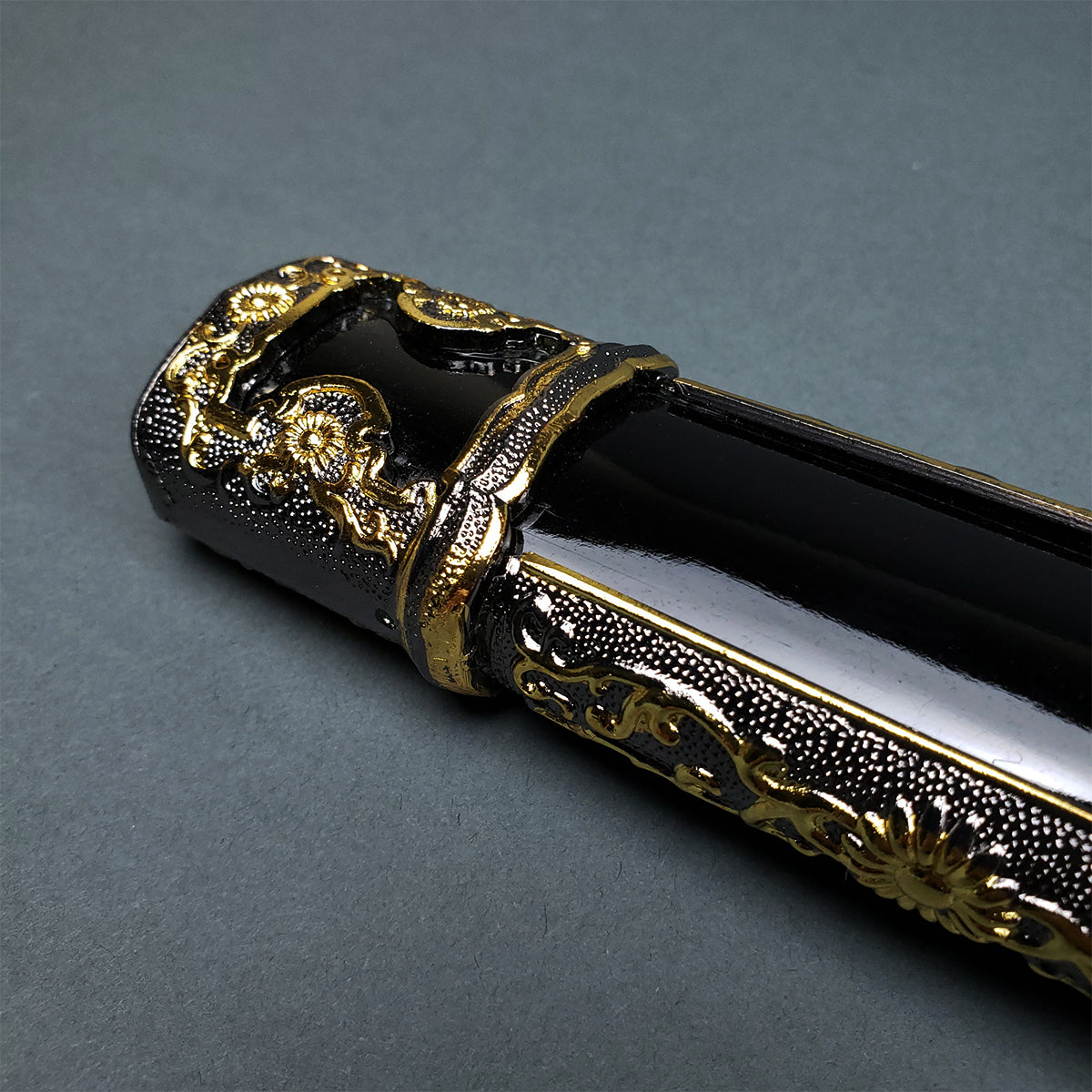
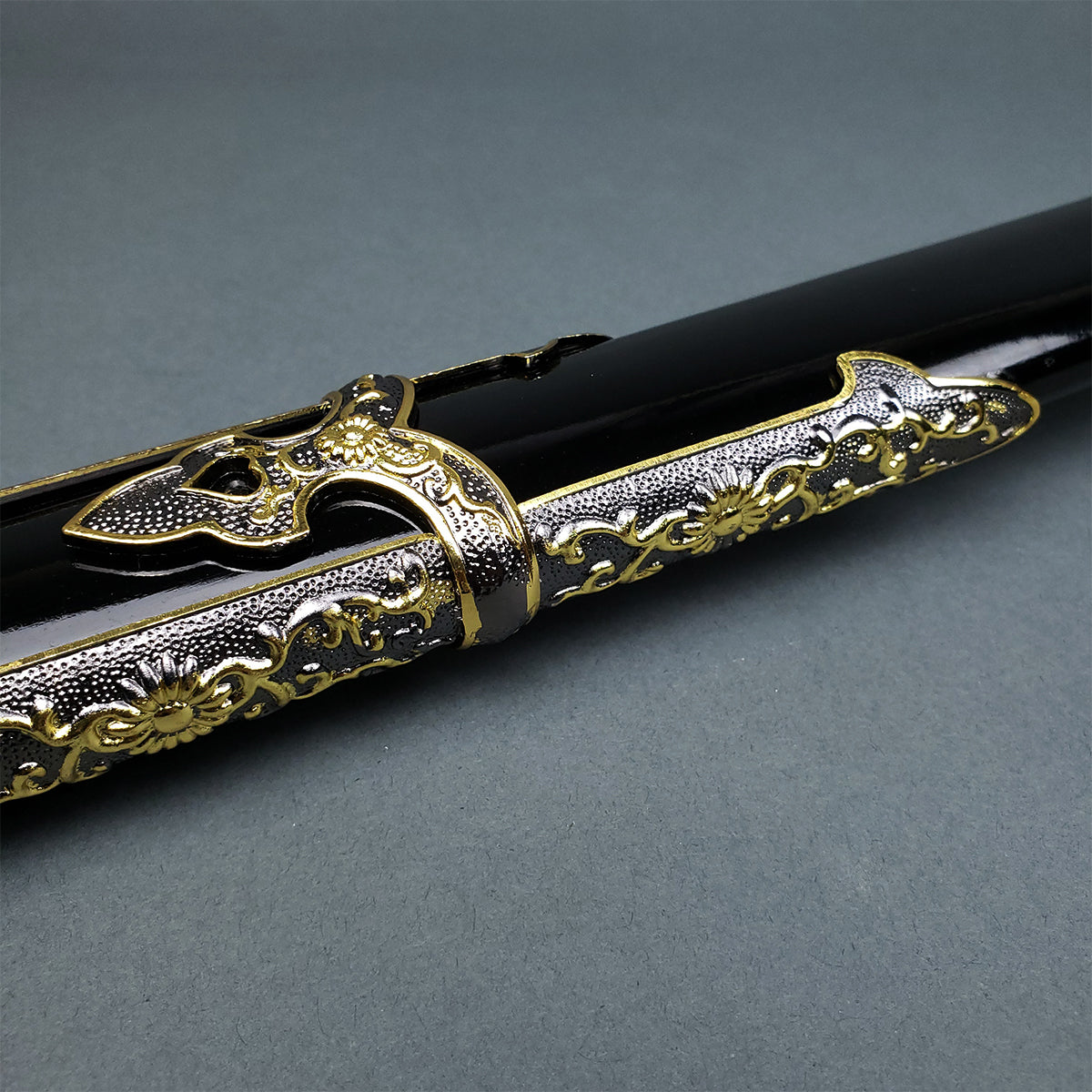
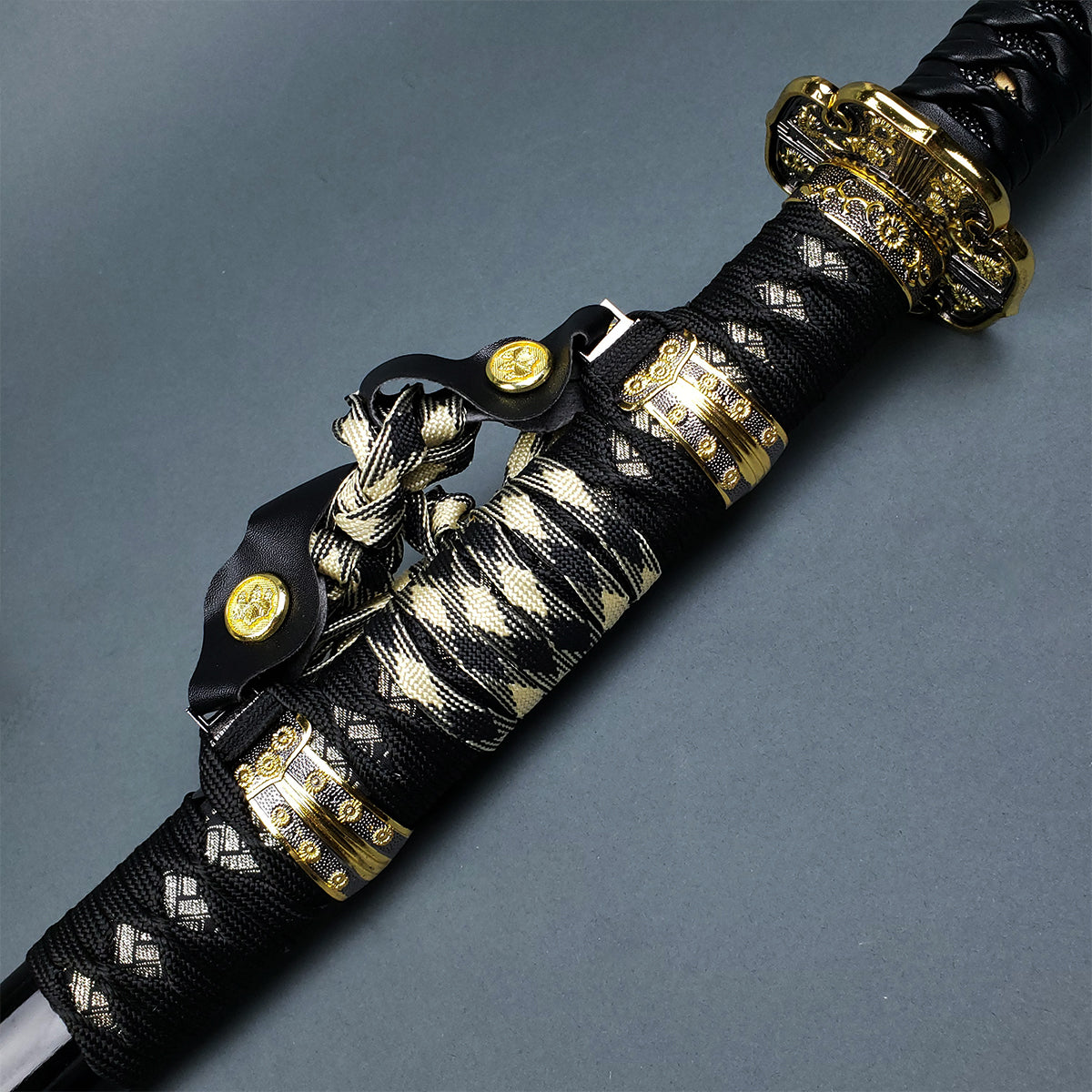

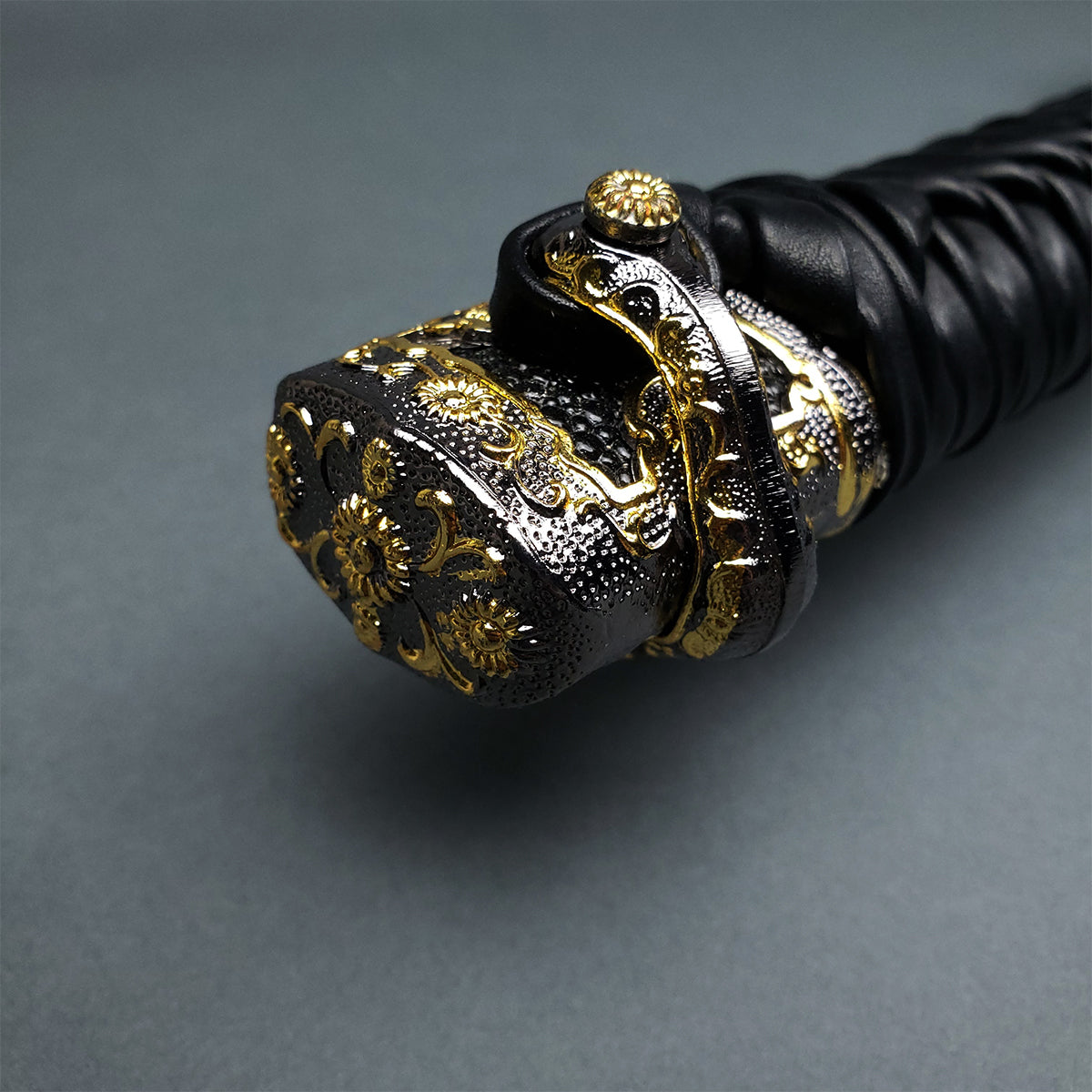
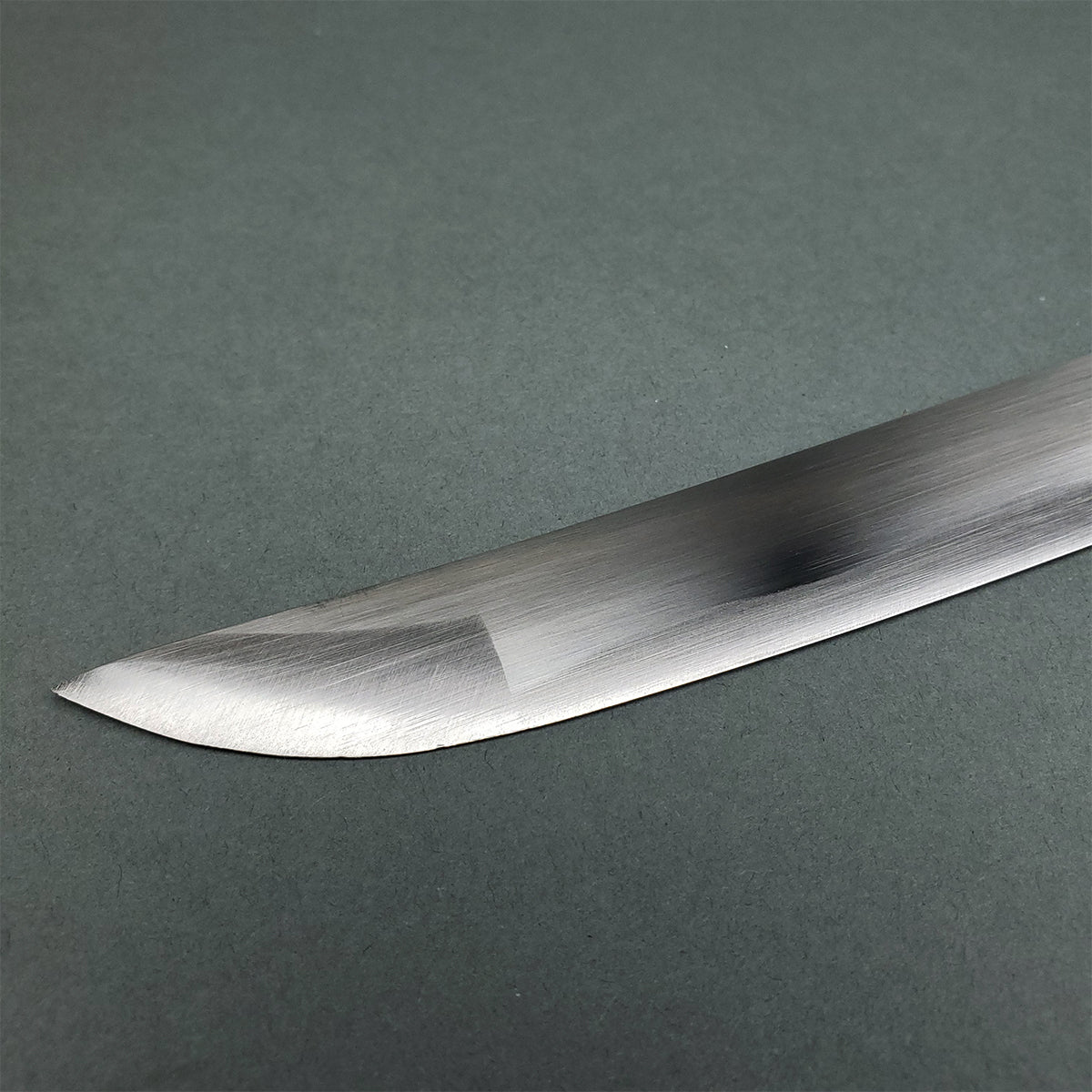
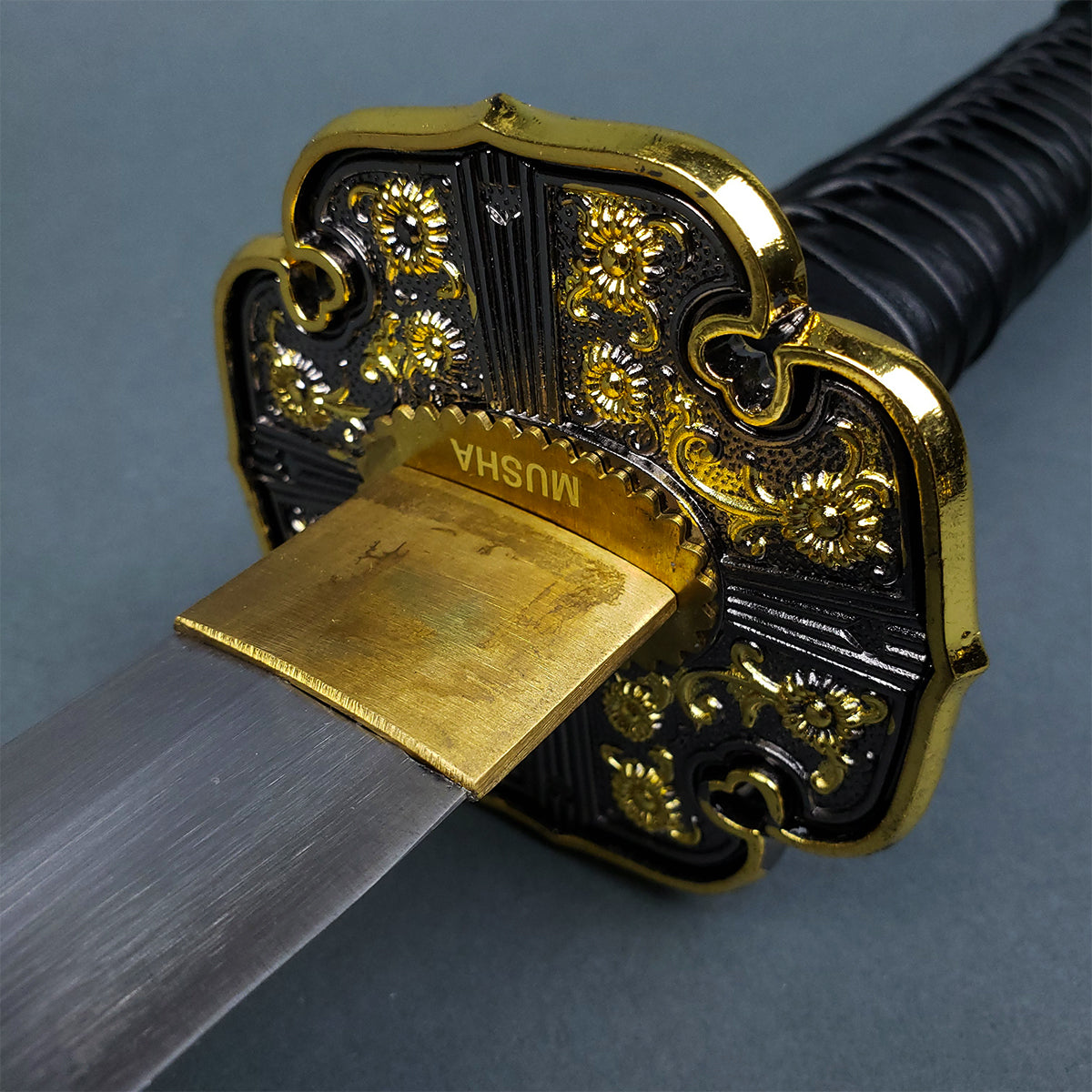

From the Musha Series comes this beautifully detailed hand forged Ceremonial "Tachi". Full tang 1045 high carbon steel that is thoroughly hardened with an aesthetic hamon makes this a resilient sword that is razor sharp right out of the box. The fittings are gold and metal grey color made of metal alloy. The real wood Tsuka is wrapped with black synthetic leather. The tsuka handle features faux black samegawa rayskin with detailed metal fuchi and kashira. The scabbard or saya also matches the theme of the tsuka and continues with detailed metal accessories. It is also partially wrapped with black and gold cloth brocade with synthetic fiber and a deluxe cotton black, multi tone sageo.
Tachi is often confused with Katana. They are very similar, but not the same. Tachi and katana generally differ in length, degree of curvature, and how they were worn when sheathed, the latter depending on the location of the mei, or signature, on the tang. The tachi style of swords preceded the development of the katana, which was not mentioned by name until near the end of the twelfth century; tachi are known to have been made in the Kotō period, ranging from 900 to 1596.
The Musha Ceremonial Tachi not only is a looker, it was design to be a fully functional sword. You will be surprised with its quality build and functionality.
Specifications:
- 43 1/4" Hand Forged Samurai Sword
- 28 1/2" Blade
- 11" Handle
- 1045 Full Tang Carbon Steel Blade
- Razor Sharp and Ready to Cut
- Hand Forged with Maru-Kitae process
- Aoi Gata style Zinc Tsuba
- Metal Fuchi and Kashira
- Includes sword bag

Protect Your Katana
The proper care and maintenance of swords is critical to retain their peak condition. The blade materials used to forge the samurai swords are susceptible to rust if not well taken care of.
SHOP NOW